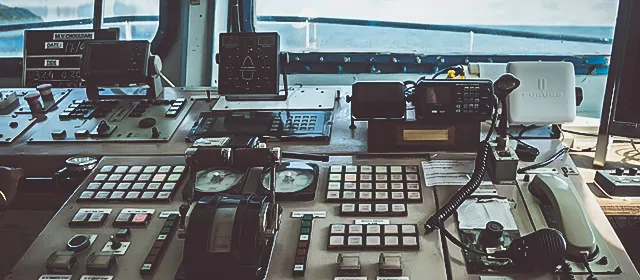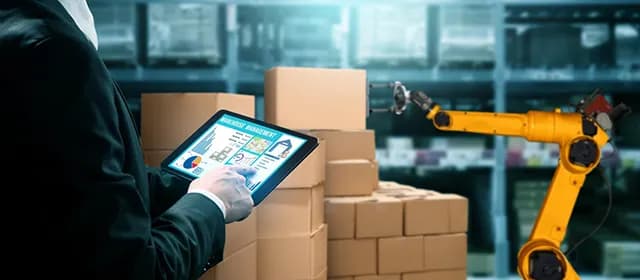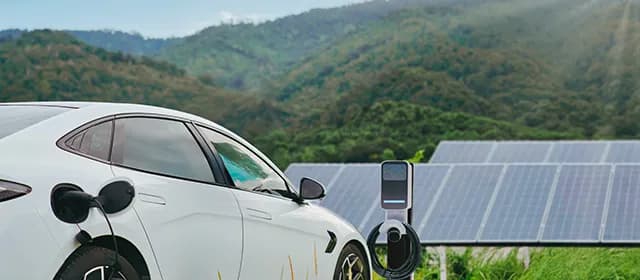Marine operations increasingly demand autonomy, efficiency, safety, and environmental compliance. Traditional marine electronics systems (navigation, communication, sensors, and control systems) are evolving into intelligent, interconnected platforms. Internet of Things (IoT) devices extend sensing capabilities to remote marine assets, while artificial intelligence (AI) enhances decision support, predictive maintenance, and autonomy. This blog assesses how IoT and AI transform marine electronics, discusses integration challenges, reviews select industry developments, and explores future trajectories.
According to Kings Research, the global marine electronics market size was valued at USD 4,988.0 million in 2023 and is projected to grow from USD 5,233.4 million in 2024 to USD 7,881.6 million by 2031, exhibiting a CAGR of 6.02% over the forecast period.
The Shift from Traditional to Intelligent Marine Systems
Marine electronics historically centered on discrete systems: radar, sonar, autopilot, GPS chartplotters, and communications. These systems generally operated in silos with minimal interconnection. Modern trends push toward integrated platforms in which sensors, actuators, and control logic interoperate across onboard networks. Standardization bodies such as the National Marine Electronics Association (NMEA) evolve protocols (such as NMEA OneNet) to support IP networking aboard vessels.
IoT extends connectivity to remote or distributed marine assets such as buoys, unmanned vessels, or structural sensors on platforms. These IoT networks feed data into edge or cloud systems. Marine IoT frameworks increasingly consider hybrid space-air-sea networks combining low Earth orbit satellites and unmanned aerial vehicles for data backhaul in sparsely connected marine environments.
AI adds value to that sensor network by extracting patterns, predicting anomalies, compressing data intelligently, and assisting in decision-making. Edge AI techniques, where models execute locally on embedded hardware, help reduce data transfer and latency. Edge AI has been applied to marine pollution monitoring, for instance, performing oil spill detection on drones with reduced model sizes and low power consumption. In marine electronics systems, integration of IoT and AI enables smarter navigation, autonomous vessel control, condition monitoring, energy optimization, and environmental surveillance.
Core Capabilities Enabled by IoT + AI
Predictive Maintenance and Condition Monitoring
Marine equipment is subject to harsh environments: salt spray, vibration, thermal cycling, biofouling, and mechanical stress. IoT sensors monitor parameters such as vibration, temperature, pressure, or electrical current. AI models detect deviations from baseline patterns and generate maintenance alerts before failure. This reduces unplanned downtime, extends equipment life, and optimizes maintenance schedules.
Osmosis announced a partnership with STW Technic in September 2025 to deliver AI-powered marine telematics. The collaboration aims to enable predictive maintenance, operational diagnostics, and engineering insight for marine hardware.
Autonomous and Assisted Navigation
Autonomous marine vessels increasingly rely on integrated sensor suites and control logic. Sea Machines Robotics provides autonomous navigation and remote helm control systems for workboats. The company’s JETsense product combines AI, sensor fusion, and pathing logic to maintain courses, avoid obstacles, and re-route dynamically.
AI supports assisted navigation by classifying sea conditions, identifying obstacles, estimating collision risk, or adjusting speed profiles. The growing marine electronics market reflects that trend: integration of AI and automation in vessel tracking, predictive maintenance, autopilot, and navigation systems appears as a prominent growth driver.
Energy Management and Efficiency
Marine vessels increasingly deploy hybrid propulsion, battery systems, renewable energy (solar, wind assist), or energy recovery systems. IoT monitors battery state, engine efficiency, fuel consumption, and environmental conditions. AI models optimize power distribution, balance load, or shift energy use to lower demand periods. This leads to reduced fuel use, lower emissions, and better operational margins.
Environmental Monitoring and Surveillance
Marine environments demand monitoring of water quality, pollution, biofouling, and weather conditions. IoT sensors deployed on buoys, ships, or unmanned platforms detect salinity, temperature, turbidity, or chemical signatures. AI performs classification, anomaly detection, or trend prediction. Environmental monitoring systems use edge-cloud collaboration to limit data volume while maintaining fidelity.
Inter-vehicle or underwater communication systems, such as BlueME’s magnetoelectric antenna array, demonstrate new communication modalities supporting marine robot coordination using very low frequency signals. This enhancement supports robotic fleets or underwater IoT systems in coordinating data exchange.
Addressing Communication, Power, and Interoperability Limitations
- Communication Constraints and Latency: Marine IoT devices must operate over long distances or in open seas where connectivity is intermittent. Satellite links, low-Earth orbit networks, or maritime edge relays may deliver data, but bandwidth, latency, and cost remain constraints. Edge AI reduces dependency on constant connectivity. Marine IoT designs, such as space-air-sea integrated frameworks, aim to optimize communication and computation jointly.
- Harsh Marine Environment and Reliability: Salt corrosion, humidity, shock, vibration, biofouling, and electromagnetic interference challenge hardware reliability. Marine electronics systems require ruggedized design, isolation, shielding, and redundancy. High-speed, corrosion-resistant connectors have become central in naval systems. New connector plating combining gold and rhodium materials undergoes extensive salt spray testing to withstand maritime conditions. IoT hardware must survive long durations in remote deployment with minimal maintenance and support self-healing or redundancy. AI models may degrade over time as sensor drift occurs; calibration and model retraining are required.
- Interoperability and Standards: Heterogeneous systems, legacy marine electronics, proprietary protocols, and multiple vendors complicate integration. Standardization efforts such as NMEA protocols, OneNet, or marine data initiatives help unify data formats and interoperability. AI models must interoperate across vendor platforms and share insights without locking into proprietary stacks. Data governance, interface APIs, and real-time pipelines need alignment across vendors and operators.
- Power and Energy Constraints: IoT nodes and AI processors must operate under power budgets, especially in unmanned or remote systems. Energy constraints require efficient sensor scheduling, low-power architectures, and power harvesting when available (solar, wave, wind). Edge AI must balance computational demand and power efficiency.
- Safety, Certification, and Regulatory Compliance: Marine electronics systems integrated with autonomous control or decision logic must meet certification or classification standards. AI decision logic may need transparency, auditability, and safety guarantees. Regulatory regimes lag behind technical innovation. Vendors must work with maritime classification societies, flag states, and standards bodies to ensure compliance.
How Leading Companies Are Implementing AI and IoT at Sea
Osmosis and STW Technic’s 2025 partnership exemplifies how marine electronics hardware and AI analytics converge. Their integrated telematics platforms target marine OEMs, dealers, and end users (Source: osmosis.io).
Sea Machines Robotics’ work in commercial autonomy applies AI and sensor fusion to control systems. Their remote helm systems obtained U.S. Coast Guard and ABS approval, giving credibility to AI-based control in marine systems.
Commercial fleet operators also invest in IoT upgrades. Maersk initiated a rollout of its OneWireless platform across 450 vessels and additional chartered vessels to improve real-time data transmission and supply chain visibility. This reflects how IoT connectivity underpins data acquisition for downstream AI applications.
Uncrewed marine vehicle companies such as Saildrone operate fleets of sensor-equipped vessels. Saildrone integrates navigation, environmental sensing, and autonomy to collect oceanographic data over long durations.
Future Trends and Outlook
Autonomous surface and underwater vessels will demand tighter integration between IoT sensor networks and onboard AI. Advanced autonomy will need robust decision logic, real-time adaptation, and mission planning in uncertain marine conditions.
Hybrid AI architectures where edge processing handles real-time decisions while cloud or satellite systems provide higher-level analytics will become standard. Coordinated fleets using distributed AI will execute tasks such as surveying, monitoring, or logistics autonomously.
Marine electronics vendors will transition toward modular, software-defined platforms. OEMs will offer upgradeable systems where AI capabilities are deliverable via software updates rather than hardware replacement. More advanced communication modalities will emerge. Underwater acoustic, magnetoelectric, or optical communication techniques such as BlueME will expand interconnectivity in submerged domains.
Integration with broader maritime digital ecosystems (e.g., smart port systems, maritime traffic management, and environmental monitoring networks) will foster intelligent end-to-end connectivity. Shared data frameworks and standard APIs may emerge for multi-stakeholder collaboration. AI techniques will evolve toward more explainable, robust models suited for safety-critical marine systems. Efforts in anomaly detection, adaptive learning, and model validation will strengthen trust in AI decision support.
Regulatory and classification bodies will adapt. Standards for autonomous vessels, AI control logic, data integrity, and cybersecurity in marine systems will crystallize. Certification pathways for intelligent electronics will emerge. Sustainability concerns will also shape design: energy efficiency, low-power AI, renewable energy integration, and reduced maintenance will guide hardware and software choices. Marine electronics systems will become integral nodes in green maritime operations.
Conclusion
IoT and AI jointly drive the next generation of marine electronics systems. IoT sensors extend observability across vessel subsystems and distributed assets. AI interprets that data to deliver predictive maintenance, autonomy, energy optimization, and environmental monitoring. Integration challenges such as connectivity constraints, harsh environment, interoperability, certification, and power management require careful system design. Partnerships such as Osmosis–STW Technic and innovations from firms like Sea Machines highlight progress in real deployments. Future marine electronics systems will embody modular architectures, hybrid AI, advanced communication, and regulatory alignment. Intelligent electronics at sea will transform maritime operations toward safer, more efficient, and more autonomous capabilities.




